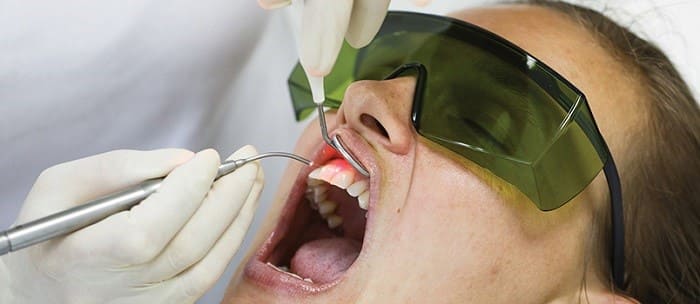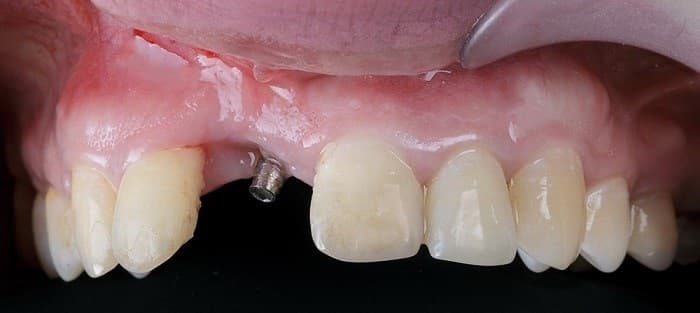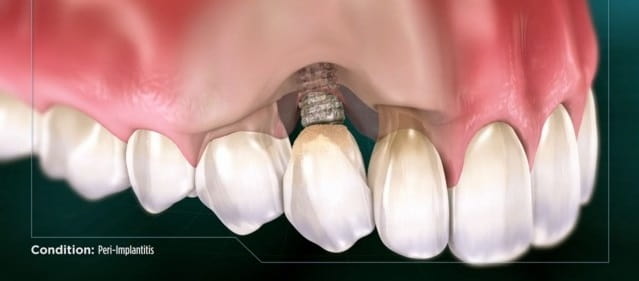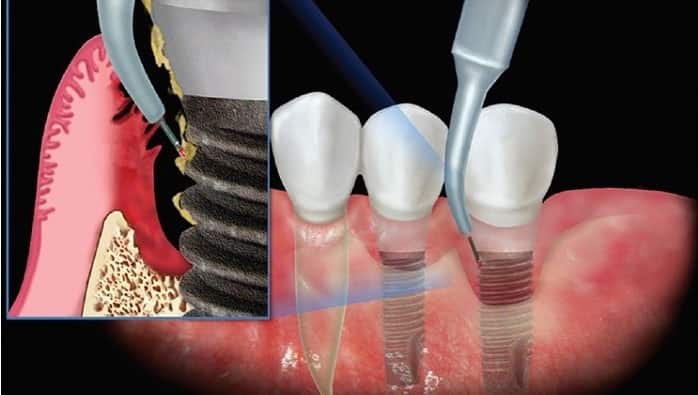One of the worst news you want to hear if you have dental implants is that one or more of them are failing. Peri- implantitis is a condition like gum disease where bacterial plaque causes infection and inflammation of the gum tissue around a dental implant. Dentists treat failing implants with a special dentistry laser, this innovative laser treatment is an alternative to scalpel- bases procedures preferred by patients and clinicians alike.
Causes of dental implant failure
Most dental implant questions are from people who are considering implants. However, there are some questions that come up commonly from people who have dental implants. Dental implants are supposed to be anchored firmly in the bone, so if you notice that your implant seems to be loose, it may be that your implant is failing, although there are other possible causes for your loose implant.
It’s normal for your teeth to move just a little bit, even if they’re healthy. About 1/100th of an inch is considered reasonable for healthy teeth,a nd any more than that is considered a loose tooth. The movement is due to the periodontal ligament, which secures the tooth in place. Even though the tooth is surrounded by bone, it’s actually held in placed by this strong, stretchy material. That’s why it’s okay to move your teeth a little bit with your tongue.
But dental implants are supposed to be anchored solidly in the bone. They shouldn’t move at all. And pushing the implant can actually make them move. When you push the implant to the side, it’s pressed up against the bone. When this happens, your body removes a small amount of bone to reduce the pressure. With natural teeth, this is partly countered because the periodontal ligament releases cells that cause your body to build new bone, but with dental implants, it can just lead to the loss of bone.
Loose Implant Crown
But that doesn’t necessarily mean that a loose-feeling implant is necessarily failing. Instead, the crown on the dental implant could be loose. Like your natural tooth, the dental implant has two parts: the crown and the root. Most “loose implants” are actually loose crowns. This is often related to the abutment, a small connection piece that links the implant and the crown, used in most implants. Otherwise, it might be the crown itself that is damaged.
dentists will evaluate your crown and abutment. Sometimes, fixing the problem is as easy as tightening a screw. Other times, dentists might need to replace the abutment or crown.
Loose Implant Didn’t Integrate
Another possible cause of a loose implant is that it hasn’t fully integrated with the jaw bone. Dental implants sometimes fail to integrate with the bone, especially if you’re a smoker. Dentists will typically notice this at an early follow-up after the procedure, but if you notice an implant seems loose, never fail to mention it.
Failure to integrate is the most common cause of implant failure. It accounts for nearly half of all implant failures (about 1% of all dental implants), and we’ll know within a few months if this is happening to your implant. To give your implant the best odds of integration:
- Follow all postoperative instructions
- Don’t consume alcohol for at least 72 hours after implant procedure
- Don’t smoke for at least 4 weeks after implant procedure
- Eat a healthy diet with all the nutrients necessary for good bone health
If an implant fails to integrate, dentists will usually remove it and try again.
Peri-Implantitis
Dental implants are an investment in your long-term health and function, but sometimes this can be put at risk if infection develops. Peri-implantitis begins when bacterial plaque infects the gums around a dental implant and causes them to become inflamed and pull away. As bacteria continues to progress the infection, more tissue and the bone around the implant become damaged. The more peri-implantitis progresses without treatment, the greater the risk of failing dental implants. The most common symptoms of peri-implantitis include swollen and bleeding gums around the dental implant, bad breath, gum recession around the dental implant, and implant mobility.
Peri-implant disease are classified into two categories:
- Peri-implant mucositis— gum inflammation is found only around the soft-tissues of the dental implant, with no signs of bone loss. Generally, peri-implant mucositis is a precursor to peri-implantitis. Evidence suggests that peri-implant mucositis may be successfully treated and is reversible if caught early.
- Peri-implantitis— gum inflammation is found around the soft-tissue and there is deterioration in the bone supporting the dental implant. Peri-implantitis usually
Rare Cases
Other than the above causes, loose dental implants are rare, but they do happen. Sometimes, a dental implant might fracture. Sometimes, trauma to an implant can cause bone to break around the implant. A small number of people have titanium allergies, which can lead to loose implants and then implant failure. dentists will test all these possibilities and recommend an appropriate solution to help you enjoy the full benefits of your dental implants.
Signs of dental implant failure
Some signs that your dental implant may be failing include:
- Loose or wobbly implants
- Swelling
- Redness
- Packing food
- Pain when biting
- Difficulty chewing.
Ailing implants can be fixed with therapeutic approaches, but failing implants likely need to be replaced.
If your implants are indeed failing, an implant specialist might suggest bone grafting (which can sometimes be done without removing the implant) or soft tissue grafts.
Advantages of Laser for failing implant
- Minimally-invasive technique
- No thermal damage to the surrounding bone
- Fast regeneration/healing
- Reduced inflammatory response
- Greater long-term implant success
- Digitally controlled handpiece technology for unmatched levels of precision
How does Laser Peri-implantitis and Peri-mucositis Treatment Work?
The ideal management of peri-implant diseases focuses on infection control, detoxification of implant surfaces, regeneration of lost tissues, and plaque-control regimens. The Er:YAG laser is used to remove microbial composition on the implant without damaging it and to treat the damaged alveolar bone around the implant. Following Er:YAG treatment, the Nd:YAG or an appropriate diode laser wavelength is used for bacterial reduction and biostimulation. Laser treatment is suitable both for peri-implant mucositis and peri-implantitis.
laser is the minimally invasive alternative to traditional peri-implantitis treatment that does not require scalpels and incisions. Similar to the treatment protocol for gum disease, laser effectively vaporize bacteria and infected gum tissue from around the endangered implant post.
Once infection has been eradicated from the site, the dental laser can be used to create a healthy blood clot and help with the regeneration and attachment of healthy tissue to the dental implant post. Virtually all patients can have their dental implants saved with this procedure, but in the occasion the dental implant must be removed, periodontists have the experience to predictably place a new dental implant.
Recovery
After surgery, recovery instructions are provided to patients. With laser gum treatment, you can expect to heal faster than traditional surgery. The length of time it will take your gums to heal depends on the severity of your gum disease. It can take anywhere from 2 – 4 weeks, while deeper pockets can take months to completely heal. Because your mouth will be tender and inflamed, a soft food diet is advised for the first few days. A follow-up appointment may be necessary to monitor your gum health.






